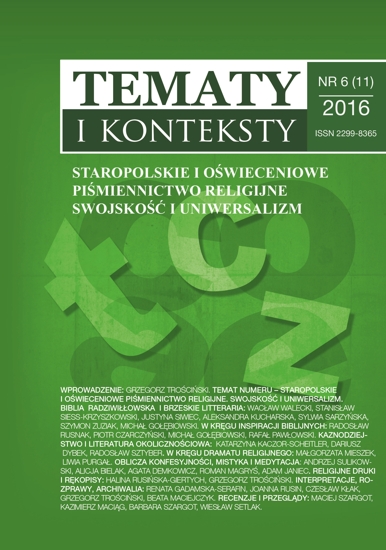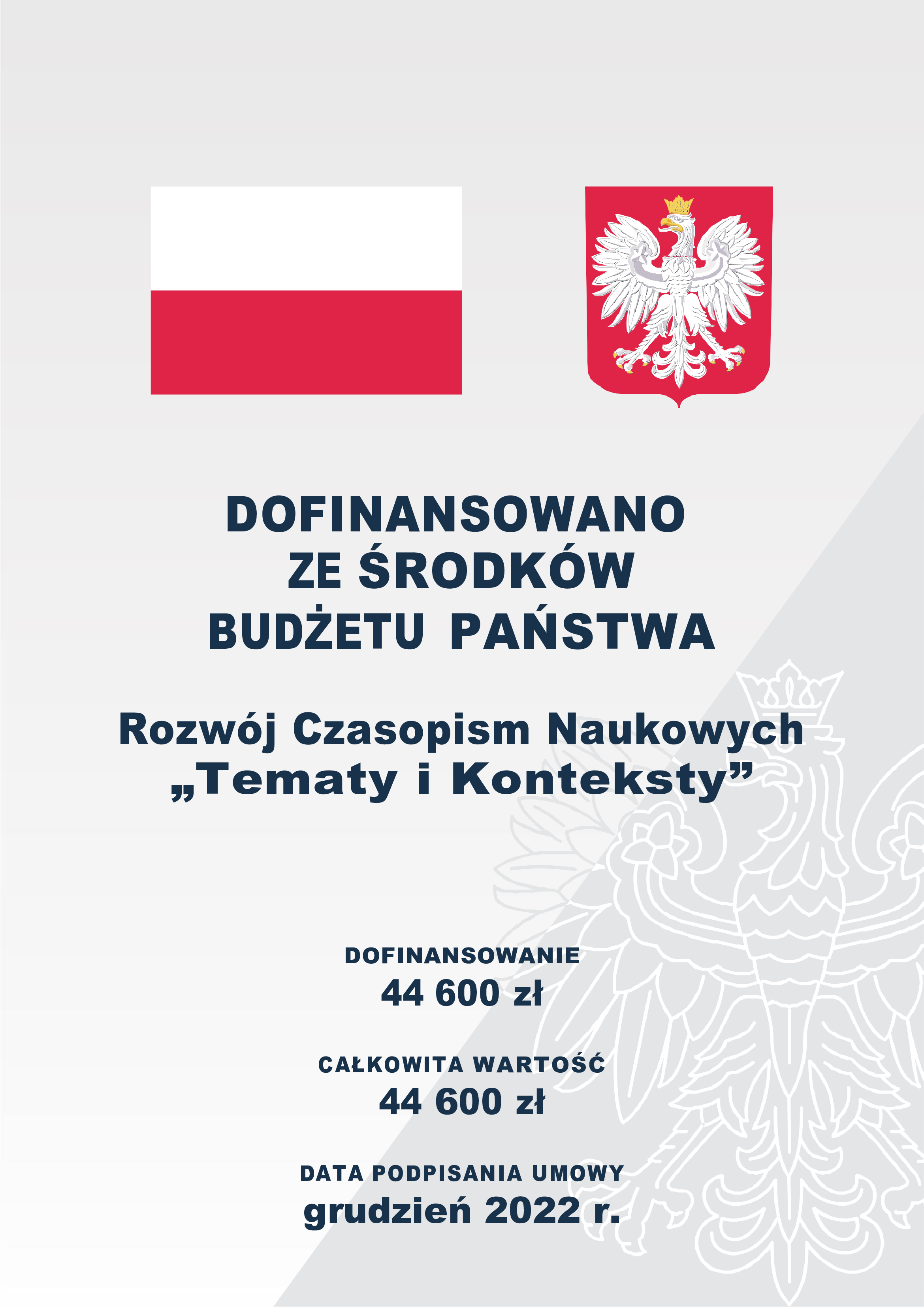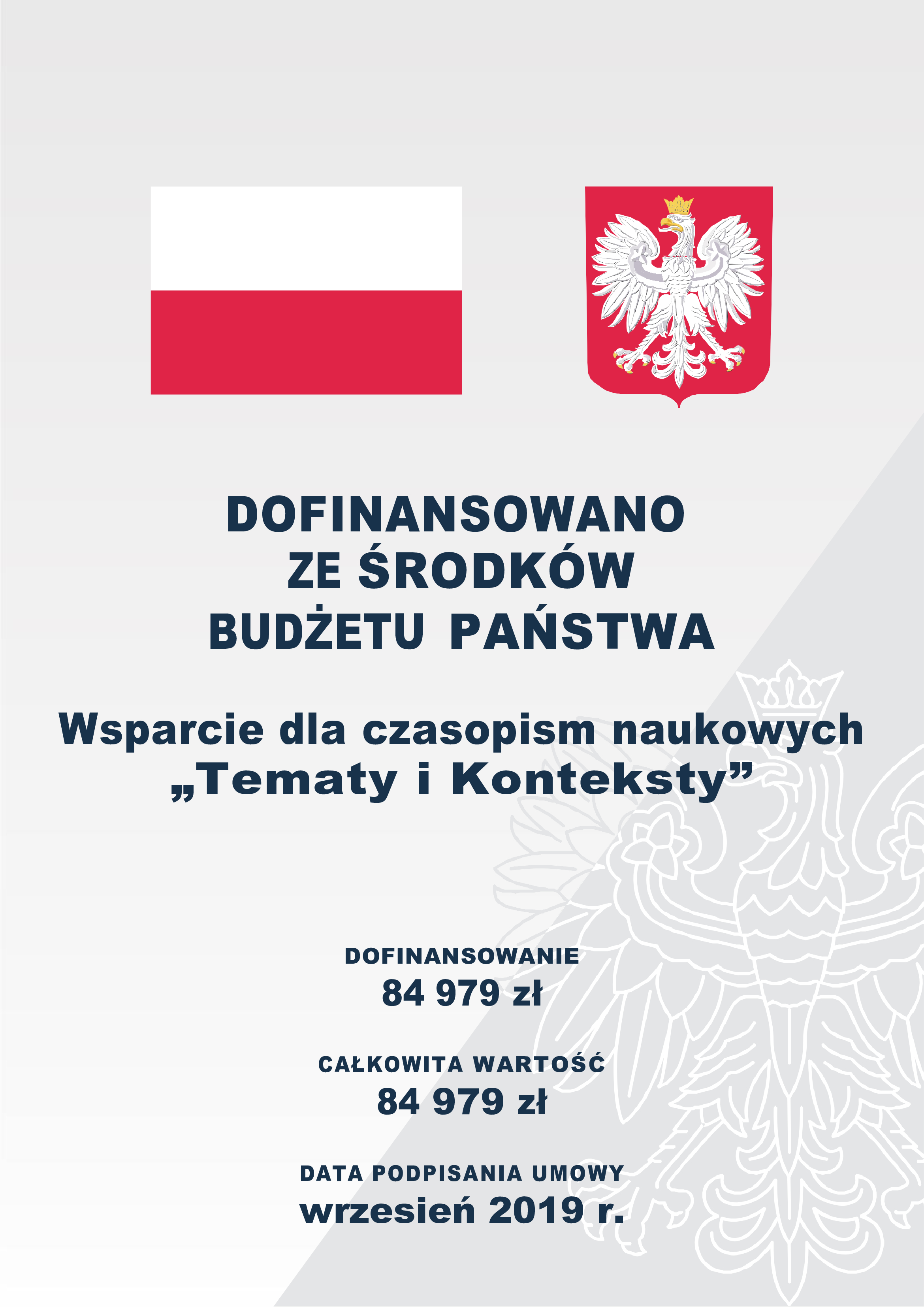Godzinki o Niepokalanym Poczęciu Najświętszej Maryi Panny. Glosy, hipotezy, interpretacje
Słowa kluczowe:
Godzinki o Niepokalanym Poczęciu Najświętszej Maryi Panny w polskiej tradycji, Najświętsza Maryja Panna w kulturze europejskiej, językowe formy obecności sacrum, gatunki w obrębie cyklu poetyckiego, języki biblijne w godzinkach (łacina, greka, hebrajski), motywy mojżeszowe i chrześcijańskie, stylistyczne tropy w modlitwie godzinek, biblijne aluzje i motywy, prozodia modlitwy i problemy z jej odmawianiem, problem archaizmów zachowanych we współcześnie wykonywanym tekście, rola godzinek w duchowym życiu Polski, zmiany w czasie i przestrzeni dotyczące wykonywania modlitwyAbstrakt
The article concerns an Old Polish matins to the Holy Mary from the 17th century, which were created as a sung prayer, especially for laics. Its composition is similar to the breviary office of the Catholic Church, whereas the versification is based on prominent poetry examples from the Polish Renaissance (Jan Kochanowski, Mikołaj Sęp Szarzyński et al.). The author states that this form of prayer was attacked or even ridiculed in the times of reformation and counter-reformation by Protestant writers. Thanks to philological analysis of every distich – with consideration of the European background – the author shows intense and direct relations of the text to the Bible in Renaissance translations (priest Jakub Wujek, the Gdańsk Bible) and sometimes also to Marian apocryphic texts. A crucial role is played here by the symbolism of numbers (especially 7, 3, 1) and the semantic differences in many lexemes and language forms of the virtually 16th century Polish, if compared with contemporary Polish. A full concretization of this poetic cycle becomes visible when the text is sung first – hence the musical and prosodic aspects of the Little Office: its melodic line, physiological effects as the deepening and regularity of the breath have been considered. This is the way the prayer influences the human body, it opens and purifies the spiritual space for the influence of God’s grace. The author localized the prayer within the daily cycle of Old Polish and contemporary civilization, he pointed out the radical changes in life habits within the last century and an evolution of folk spirituality. The Little Office also has its place in the weekly cycle whereby every part is assigned to one specific day of the week. During the philological and prosodic analysis potential performers of the Little Office in Old Poland from the circles of peasants and craftsmen were named. The text has been well acquired in the community for twenty generations – the Little Office is often sung from memory exclusively. Because of the sociological changes it pervaded, thanks to the Roman-Catholic liturgy, into the contemporary urban ceremonial.
Downloads
Pobrania
Opublikowane
Jak cytować
Numer
Dział
Licencja
Prawa autorskie (c) 2016 Tematy i Konteksty

Utwór dostępny jest na licencji Creative Commons Uznanie autorstwa – Użycie niekomercyjne – Bez utworów zależnych 4.0 Międzynarodowe.




